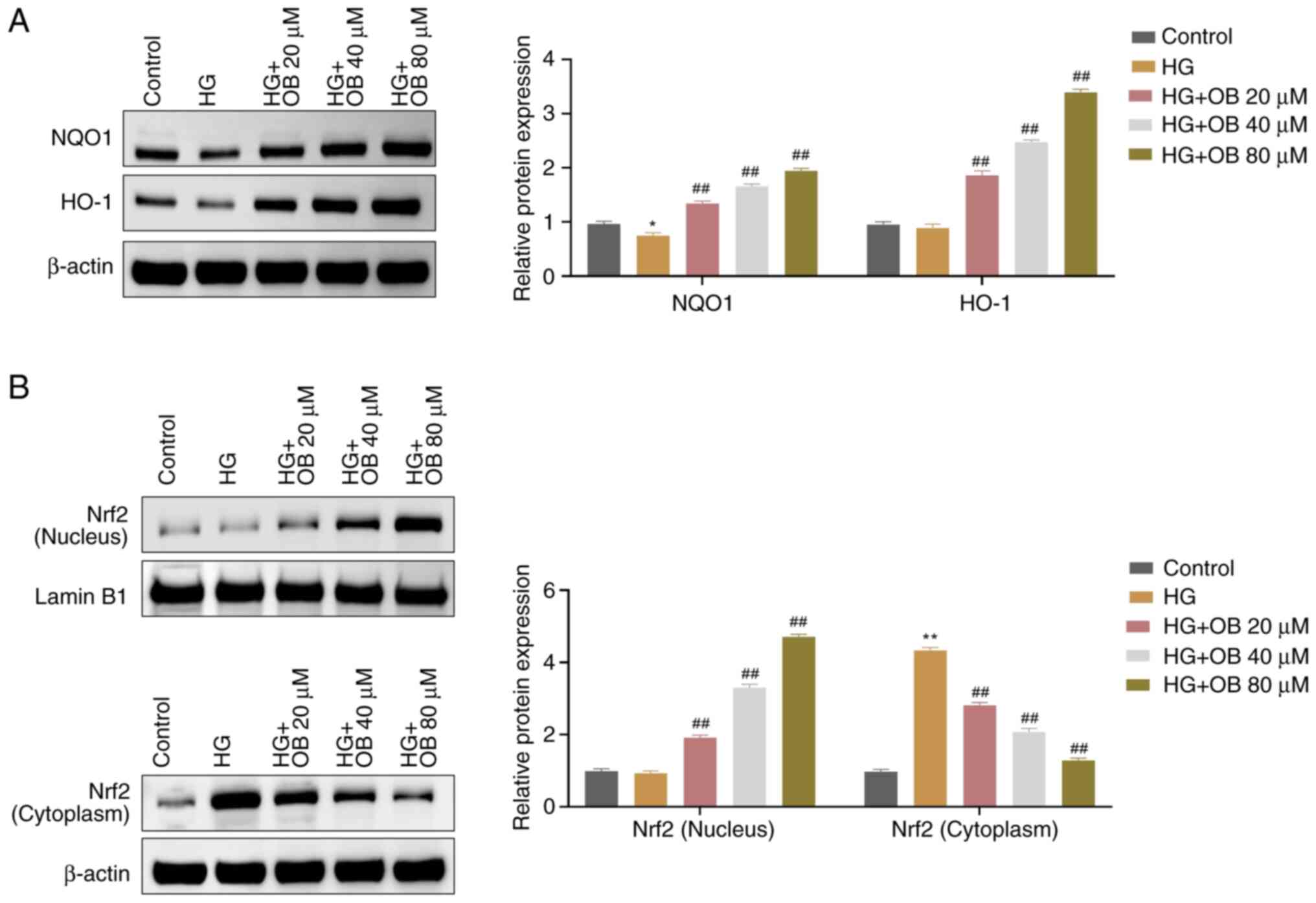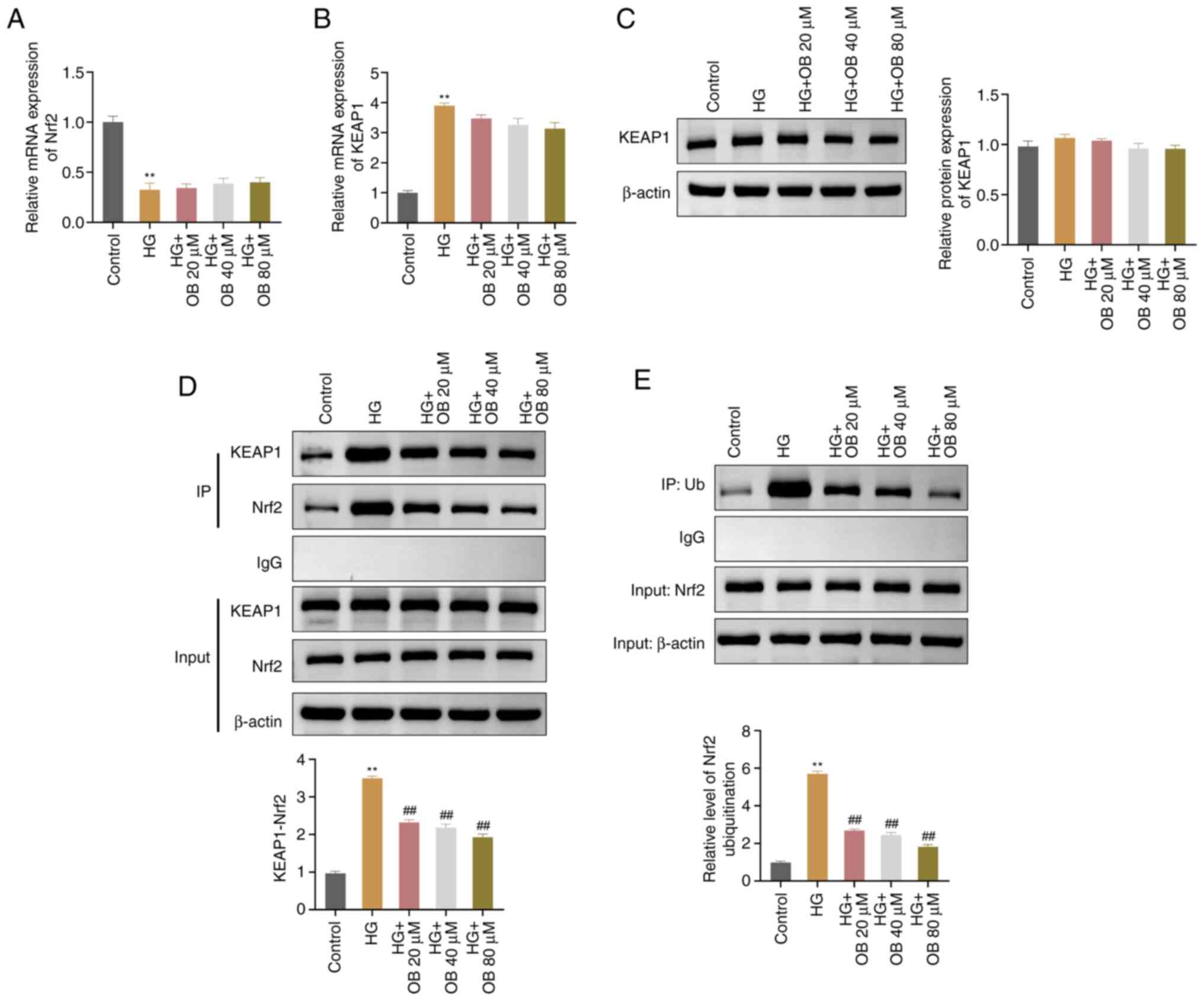|
1
|
Deng W, Zhao L, Chen C, Ren Z, Jing Y, Qiu
J and Liu D: National burden and risk factors of diabetes mellitus
in China from 1990 to 2021: Results from the Global Burden of
Disease study 2021. J Diabetes. 16:e700122024. View Article : Google Scholar : PubMed/NCBI
|
|
2
|
Qi C, Mao X, Zhang Z and Wu H:
Classification and differential diagnosis of diabetic nephropathy.
J Diabetes Res. 2017:86371382017. View Article : Google Scholar : PubMed/NCBI
|
|
3
|
Kanaley JA, Colberg SR, Corcoran MH, Malin
SK, Rodriguez NR, Crespo CJ, Kirwan JP and Zierath JR:
Exercise/physical activity in individuals with type 2 diabetes: A
consensus statement from the American college of sports medicine.
Med Sci Sports Exerc. 54:353–368. 2022. View Article : Google Scholar : PubMed/NCBI
|
|
4
|
Chen J, Liu Q, He J and Li Y: Immune
responses in diabetic nephropathy: Pathogenic mechanisms and
therapeutic target. Front Immunol. 13:9587902022. View Article : Google Scholar : PubMed/NCBI
|
|
5
|
Zoja C, Xinaris C and Macconi D: Diabetic
nephropathy: Novel molecular mechanisms and therapeutic targets.
Front Pharmacol. 11:5868922020. View Article : Google Scholar : PubMed/NCBI
|
|
6
|
Naaman SC and Bakris GL: Diabetic
nephropathy: Update on pillars of therapy slowing progression.
Diabetes Care. 46:1574–1586. 2023. View Article : Google Scholar : PubMed/NCBI
|
|
7
|
Samsu N: Diabetic nephropathy: Challenges
in pathogenesis, diagnosis, and treatment. Biomed Res Int.
2021:14974492021. View Article : Google Scholar : PubMed/NCBI
|
|
8
|
Zhou TY, Tian N, Li L and Yu R: Iridoids
modulate inflammation in diabetic kidney disease: A review. J
Integr Med. 22:210–222. 2024. View Article : Google Scholar : PubMed/NCBI
|
|
9
|
Shinjyo N, Parkinson J, Bell J, Katsuno T
and Bligh A: Berberine for prevention of dementia associated with
diabetes and its comorbidities: A systematic review. J Integr Med.
18:125–151. 2020. View Article : Google Scholar : PubMed/NCBI
|
|
10
|
Zheng W, Yang S and Chen X: The
pharmacological and pharmacokinetic properties of obacunone from
citrus fruits: A comprehensive narrative review. Fitoterapia.
169:1055692023. View Article : Google Scholar : PubMed/NCBI
|
|
11
|
Wang S, Kuperman LL, Song Z, Chen Y, Liu
K, Xia Z, Xu Y and Yu Q: An overview of limonoid synthetic
derivatives as promising bioactive molecules. Eur J Med Chem.
259:1157042023. View Article : Google Scholar : PubMed/NCBI
|
|
12
|
Ono E, Inoue J, Hashidume T, Shimizu M and
Sato R: Anti-obesity and anti-hyperglycemic effects of the dietary
citrus limonoid nomilin in mice fed a high-fat diet. Biochem
Biophys Res Commun. 410:677–681. 2011. View Article : Google Scholar : PubMed/NCBI
|
|
13
|
Qiu Z, He J, Shao G, Hu J, Li X, Zhou H,
Li M and Yang B: Obacunone retards renal cyst development in
autosomal dominant polycystic kidney disease by activating NRF2.
Antioxidants (Basel). 11:382021. View Article : Google Scholar : PubMed/NCBI
|
|
14
|
Kurosaki Y, Imoto A, Kawakami F, Ouchi M,
Morita A, Yokoba M, Takenaka T, Ichikawa T, Katagiri M, Nielsen R
and Ishii N: In vitro study on effect of bardoxolone methyl on
cisplatin-induced cellular senescence in human proximal tubular
cells. Mol Cell Biochem. 477:689–699. 2022. View Article : Google Scholar : PubMed/NCBI
|
|
15
|
Zhou J, Wang T, Wang H, Jiang Y and Peng
S: Obacunone attenuates high glucose-induced oxidative damage in
NRK-52E cells by inhibiting the activity of GSK-3beta. Biochem
Biophys Res Commun. 513:226–233. 2019. View Article : Google Scholar : PubMed/NCBI
|
|
16
|
Livak KJ and Schmittgen TD: Analysis of
relative gene expression data using real-time quantitative PCR and
the 2(−Delta Delta C(T)) method. Methods. 25:402–408. 2001.
View Article : Google Scholar : PubMed/NCBI
|
|
17
|
Xue S, Li YX, Lu XX and Tang W:
Dapagliflozin can alleviate renal fibrosis in rats with
streptozotocin-induced type 2 diabetes mellitus. Exp Ther Med.
26:5722023. View Article : Google Scholar : PubMed/NCBI
|
|
18
|
Wahab NAA, Giribabu N, Kilari EK and
Salleh N: Abietic acid ameliorates nephropathy progression via
mitigating renal oxidative stress, inflammation, fibrosis and
apoptosis in high fat diet and low dose streptozotocin-induced
diabetic rats. Phytomedicine. 107:1544642022. View Article : Google Scholar : PubMed/NCBI
|
|
19
|
Lang X, Zhang X, Wang D and Zhou W: In
vitro and in vivo metabolic activation of obacunone, a bioactive
and potentially hepatotoxic constituent of dictamni cortex. Planta
Med. 86:686–695. 2020. View Article : Google Scholar : PubMed/NCBI
|
|
20
|
AlTamimi JZ, AlFaris NA, Alshammari GM,
Alagal RI, Aljabryn DH and Abdo Yahya M: Protective effect of
eriodictyol against hyperglycemia-induced diabetic nephropathy in
rats entails antioxidant and anti-inflammatory effects mediated by
activating Nrf2. Saudi Pharm J. 31:1018172023. View Article : Google Scholar : PubMed/NCBI
|
|
21
|
Fischer AH, Jacobson KA, Rose J and Zeller
R: Hematoxylin and eosin staining of tissue and cell sections. CSH
Protoc. 2008.pdb prot4986. 2008.
|
|
22
|
Liu Y and Tang SC: Recent progress in stem
cell therapy for diabetic nephropathy. Kidney Dis (Basel). 2:20–27.
2016. View Article : Google Scholar : PubMed/NCBI
|
|
23
|
Song X and Long D: Nrf2 and Ferroptosis: A
new research direction for neurodegenerative diseases. Front
Neurosci. 14:2672020. View Article : Google Scholar : PubMed/NCBI
|
|
24
|
Sharma K, McCue P and Dunn SR: Diabetic
kidney disease in the db/db mouse. Am J Physiol Renal Physiol.
284:F1138–F1144. 2003. View Article : Google Scholar : PubMed/NCBI
|
|
25
|
Li Z, Lu S and Li X: The role of metabolic
reprogramming in tubular epithelial cells during the progression of
acute kidney injury. Cell Mol Life Sci. 78:5731–5741. 2021.
View Article : Google Scholar : PubMed/NCBI
|
|
26
|
Stockwell BR, Friedmann Angeli JP, Bayir
H, Bush AI, Conrad M, Dixon SJ, Fulda S, Gascón S, Hatzios SK,
Kagan VE, et al: Ferroptosis: A regulated cell death nexus linking
metabolism, redox biology, and disease. Cell. 171:273–285. 2017.
View Article : Google Scholar : PubMed/NCBI
|
|
27
|
Ding K, Liu C, Li L, Yang M, Jiang N, Luo
S and Sun L: Acyl-CoA synthase ACSL4: an essential target in
ferroptosis and fatty acid metabolism. Chin Med J (Engl).
136:2521–2537. 2023.PubMed/NCBI
|
|
28
|
Mengstie MA, Seid MA, Gebeyehu NA, Adella
GA, Kassie GA, Bayih WA, Gesese MM, Anley DT, Feleke SF, Zemene MA,
et al: Ferroptosis in diabetic nephropathy: Mechanisms and
therapeutic implications. Metabol Open. 18:1002432023. View Article : Google Scholar : PubMed/NCBI
|
|
29
|
Chen J, Ou Z, Gao T, Yang Y, Shu A, Xu H,
Chen Y and Lv Z: Ginkgolide B alleviates oxidative stress and
ferroptosis by inhibiting GPX4 ubiquitination to improve diabetic
nephropathy. Biomed Pharmacother. 156:1139532022. View Article : Google Scholar : PubMed/NCBI
|
|
30
|
Ajiboye BO, Famusiwa CD, Nifemi DM,
Ayodele BM, Akinlolu OS, Fatoki TH, Ezzat AO, Al-Lohedan HA, Gupta
S and Oyinloye BE: Nephroprotective effect of hibiscus sabdariffa
leaf flavonoid extracts via KIM-1 and TGF-1beta signaling pathways
in streptozotocin-induced rats. ACS Omega. 9:19334–19344. 2024.
View Article : Google Scholar : PubMed/NCBI
|
|
31
|
Zhang W, Liu Y, Zhou J, Qiu T, Xie H and
Pu Z: Chicoric acid advanced PAQR3 ubiquitination to ameliorate
ferroptosis in diabetes nephropathy through the relieving of the
interaction between PAQR3 and P110alpha pathway. Clin Exp
Hypertens. 46:23260212024. View Article : Google Scholar : PubMed/NCBI
|
|
32
|
Jiang X, Stockwell BR and Conrad M:
Ferroptosis: mechanisms, biology and role in disease. Nat Rev Mol
Cell Biol. 22:266–282. 2021. View Article : Google Scholar : PubMed/NCBI
|
|
33
|
Chen F, Xiao M, Hu S and Wang M:
Keap1-Nrf2 pathway: A key mechanism in the occurrence and
development of cancer. Front Oncol. 14:13814672024. View Article : Google Scholar : PubMed/NCBI
|
|
34
|
Nan F, Tian Q and Chen S: Obacunone
alleviates inflammatory pain by promoting m2 microglial
polarization and by activating Nrf2/HO-1 signaling pathway. Drug
Des Devel Ther. 18:1265–1275. 2024. View Article : Google Scholar : PubMed/NCBI
|
|
35
|
Li J, Deng SH, Li J, Li L, Zhang F, Zou Y,
Wu DM and Xu Y: Obacunone alleviates ferroptosis during
lipopolysaccharide-induced acute lung injury by upregulating
Nrf2-dependent antioxidant responses. Cell Mol Biol Lett.
27:292022. View Article : Google Scholar : PubMed/NCBI
|
|
36
|
Bai Y, Wang W, Wang L, Ma L, Zhai D, Wang
F, Shi R, Liu C, Xu Q, Chen G and Lu Z: Obacunone attenuates liver
fibrosis with enhancing anti-oxidant effects of GPx-4 and
inhibition of EMT. Molecules. 26:3182021. View Article : Google Scholar : PubMed/NCBI
|
|
37
|
Anders HJ and Schlondorff D: Toll-like
receptors: Emerging concepts in kidney disease. Curr Opin Nephrol
Hypertens. 16:177–183. 2007. View Article : Google Scholar : PubMed/NCBI
|
|
38
|
Bonventre JV and Yang L: Cellular
pathophysiology of ischemic acute kidney injury. J Clin Invest.
121:4210–4221. 2011. View Article : Google Scholar : PubMed/NCBI
|
|
39
|
Zhang X, Donnan PT, Bell S and Guthrie B:
Non-steroidal anti-inflammatory drug induced acute kidney injury in
the community dwelling general population and people with chronic
kidney disease: Systematic review and meta-analysis. BMC Nephrol.
18:2562017. View Article : Google Scholar : PubMed/NCBI
|















